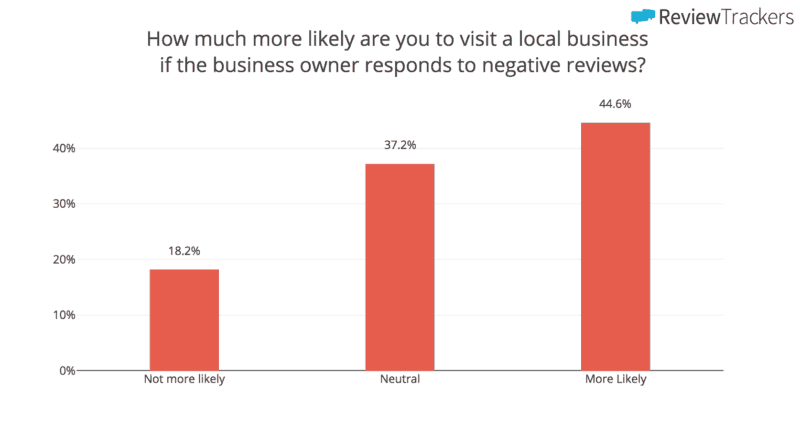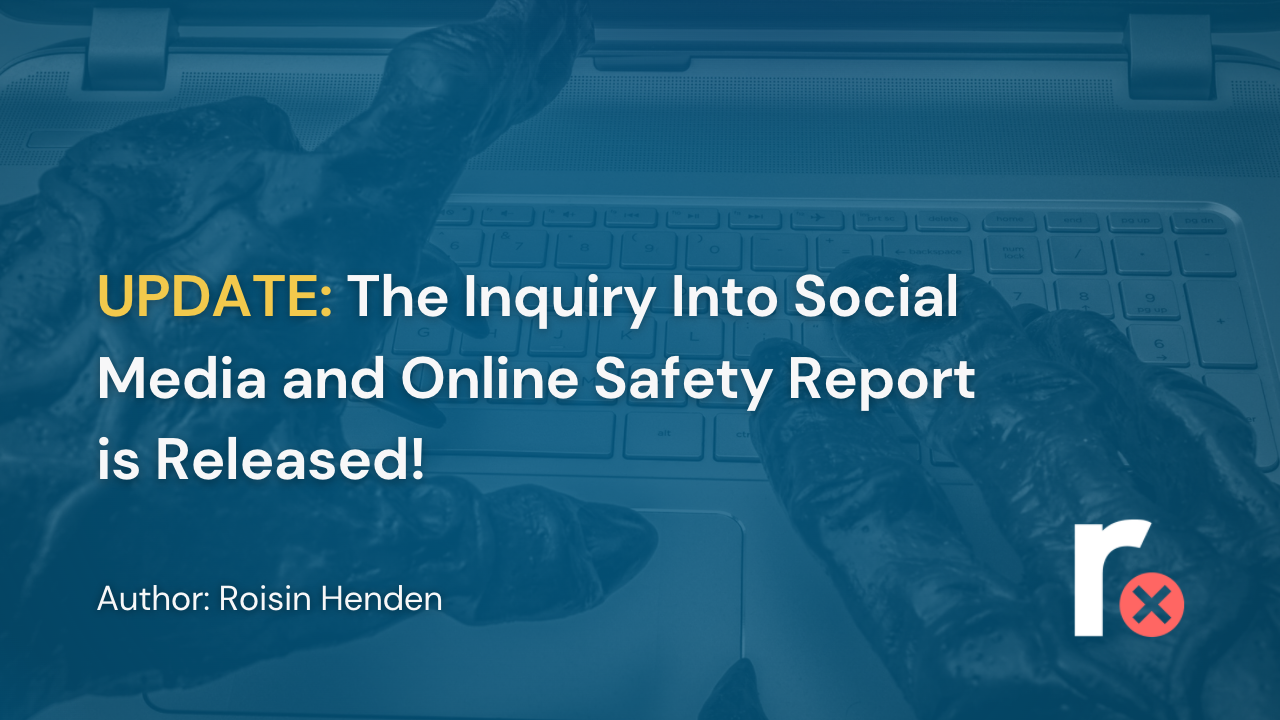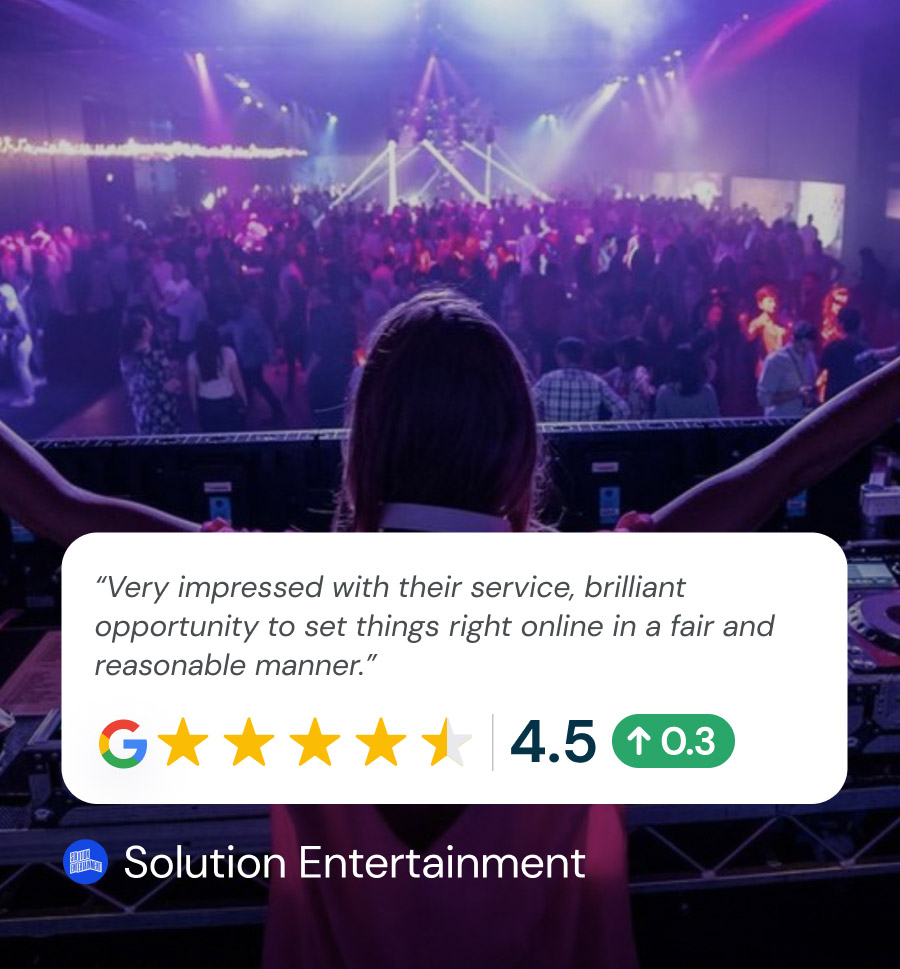You can’t please everyone. That simple sentence is a hard pill for many business owners to swallow.
It’s even harder to digest when the unhappy customer decides to let the world know about it!
The importance of a positive reputation online for building brand loyalty is indisputable. Why? Because 9 out of 10 prospective customers read an average of 10 reviews online before purchasing.
Even more daunting is that 94% of consumers say a bad review has convinced them to avoid a business.
The worst thing you can do is leave it alone. If your company is seen handling a negative review with good grace, customers are less likely to hold the review against you.
In our very first post, we provide business owners with the ultimate guide to responding to bad reviews. Read on for 10 actionable steps to help you smooth over the causes of a bad review and move on amicably.
1. Take a Moment to Breathe

Your business is like your baby. When someone lashes out against something so near and dear to you, it hurts – and that’s okay.
However, being reactionary never ends well. When you’re presented with a bad review, it’s wise to take a moment to breathe and let the feelings pass before formulating a response.
After the wave of anger subsides, you’ll be in a much better position to resolve the issue constructively.
2. Use Discretion

Now is the time to evaluate the review from an objective perspective. Does the review appear to be legitimate? While responding to negative reviews is often a worthwhile endeavour, the truth is that not every review is worth responding to.
Reviews consisting of shallow attacks on your business, ranting, making false claims or being threatening do not warrant a professional response.
Some reviews are fundamentally unfair and irrational. These call for straight-up removal. Reviews that call for responses are authentic grievances with reasonable grounds for complaint. These are the ones you have the power to resolve.
Once you have verified the review’s legitimacy, you’re now in a prime position to form your response.
3. Respond In Private and Public

Before posting a public response, it’s a smart move to reach out to the poster privately if your platform allows you to do so. This works especially in cases of legitimate complaint where a customer seems emotional in the review.
Connecting with the customer away from public view is often unexpected by the reviewer. Taking this action affirms that their voice matters, and some root causes of bad reviews can be sorted out easily in private without fuss.
In cases where the issue is resolved quickly, you’re then in a position to kindly ask the poster to update their review. Letting customers see your ability to see conflict resolution through to a positive conclusion is a redeeming quality in the eyes of many review readers.
If private resolution isn’t able to be accomplished or your platform doesn’t allow you to do so, that’s when you go public.
4. Hold Yourself Accountable

A prerequisite for any bad review follow up is to always hold yourself and your business accountable.
This means giving an apology for where it all went wrong, reiterating your vision for the business, and letting the customer know that you take their problem seriously – without making excuses.
Even if the mistake is due to circumstances out of your company’s direct control, your customers still attribute the mistake to your company name. Taking responsibility casts your business is a much more positive light.
5. Voice Your Intention

Right from the start, it’s good practice to clearly state your intention to resolve the issue.
Expressing an intention to provide a better experience for your customers in the future plays a key role in not only building brand loyalty, but also for boosting future sales: 63% of people would pay up to 15% more if they are assured a better customer experience in the future.
6. Be Genuine

Adding a personal touch to your responses goes a long way. Readers now have an acute sense for canned, inauthentic responses and can sniff out automated replies a mile away.
If you truly want to make customers feel valued, templates are not going to cut it. These only add to existing frustrations, making the poster more likely to fan the flames and sway more people away from your company.
Personal replies do more than just make reviewers feel valued: they remind them that you’re human too. These measures can go a long way in turning the tides back in your favour.
7. Be Specific

Being specific means getting to the root cause of the issue. This is where you channel some counselling rationale, reflecting and validating the reviewer’s concern.
This extension of adding a personal touch shows customers that you care enough to tailor a response specifically to them.
Additionally, this is an opportunity to highlight the unusual nature of such a bad experience. Contrasting the occurrence against your high standards of service lets you defend your company while also addressing the problem.
8. Keep it Concise

Be careful not to ramble in your responses, both public and private. Long, fluffy replies do not work in your favour – in fact, they make your business appear unprofessional.
The ability to say more with less is a useful talent, and it goes a long way in responding to bad reviews. It projects competency and clarity in dealing with the situation.
9. Follow Up Offline

Review responses are best concluded by offering to solve the problem offline. It’s easier to solve issues over a more personal medium, such as on the phone or face-to-face, if possible.
Referring the poster directly to a capable member of your customer care team will seriously boost your chances of finding a positive resolution.
Extending this invitation goes a long way toward building the bridge to restore their brand loyalty. It’s easy to vent online, so don’t be hesitant to talk to these posters personally. They’re almost always “more bark than bite”!
10. Continue Keeping Up

Monitoring your reputation online is integral to success. With regular check-ins, it’s much easier to stay on top of your company’s reviews. This way, problems are deal with swiftly and without delay.
Seeing as you’ve gotten this far, you’ve earned one last bonus hint: it’s worth responding to positive reviews too!
Being visibly grateful for kind feedback from loyal customers is just as important as defending your company from naysayers.
It’s true that negative online reviews certainly can crush a business. But, if they are handled properly and professionally, the impact is sure to be reduced.
We hope you’ve enjoyed Removify’s very first blog post. If you are looking for more advice on reputation management or the removal of damaging content, we’ve got you covered. Rest assured, there’s much more to come from our blog – you ain’t seen nothing yet!








